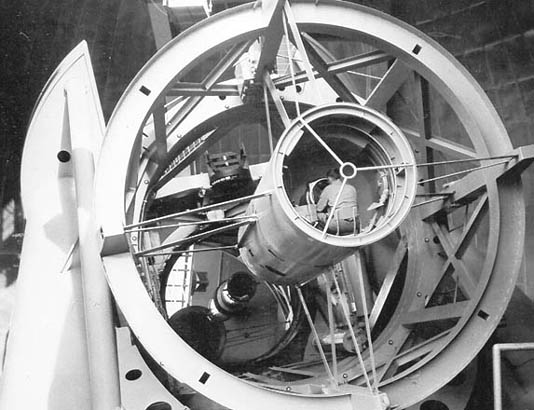They're not different. Same principles do apply. You could have secondary, tertiary, quaternary, and so on, mirrors with instruments at any wavelength, either optical, or radio, or infrared, etc. You could also have instrumentation placed directly in prime focus (so no mirrors other than the primary) with any kind of instrument - radio or infrared or visible or whatever.
See this image of the 5 meter Hale telescope on Mt. Palomar - there is no secondary mirror in this case, the observer is sitting in a little cage at prime focus, using the primary mirror directly:

Of course, for other scenarios, the Hale telescope employs secondary and tertiary mirrors - it depends on the particulars of the telescope, the instrumentation, the experiment or research you're doing, etc.
One reason many of the large optical telescopes very often have at least a secondary mirror is that the architecture preferred in most of these cases is the Ritchey–Chrétien - chosen often for the largest professional telescopes because it eliminates coma, an aberration that is detrimental to astrometry (with coma, images of stars are not round, so it's hard to measure angular distances between them). You could use the primary mirror of such a telescope directly, sure, but being a concave hyperbolic mirror, it has strong aberrations of its own, and so requires the convex hyperbolic secondary (often a strong hyperbola, with a large eccentricity) to correct the aberrations.
The Hale telescope pictured above has a parabolic primary, so using it directly is not a problem.
Again, all of the above are not strict rules, just statistical observations.
Some radio telescopes have instrumentation at prime focus simply because it's convenient for that particular case. Other radio telescopes have secondary mirrors. Again, it all depends on what you try to achieve. E.g., the Arecibo radio telescope could be used either in prime focus, or with a secondary mirror in a Gregorian configuration - here's the image with the prime focus instrumentation and the Gregorian mirror to the left:

In the case of the Arecibo scope, the N-ary mirrors are sometimes used to correct the aberrationa of the spherical primary reflector, but that's not the only reason why they're used.
Here's a discussion comparing various architectures (classic Cassegrain versus Ritchey-Chrétien versus anastigmatic aplanat) for a large radio telescope, highlighting various design, performance and operational issues for each. TLDR: classic Cassegrain is traditional for radio telescopes, but the R-C architecture performs better and is not significantly more difficult to build; OTOH, with R-C you must always use the secondary.



